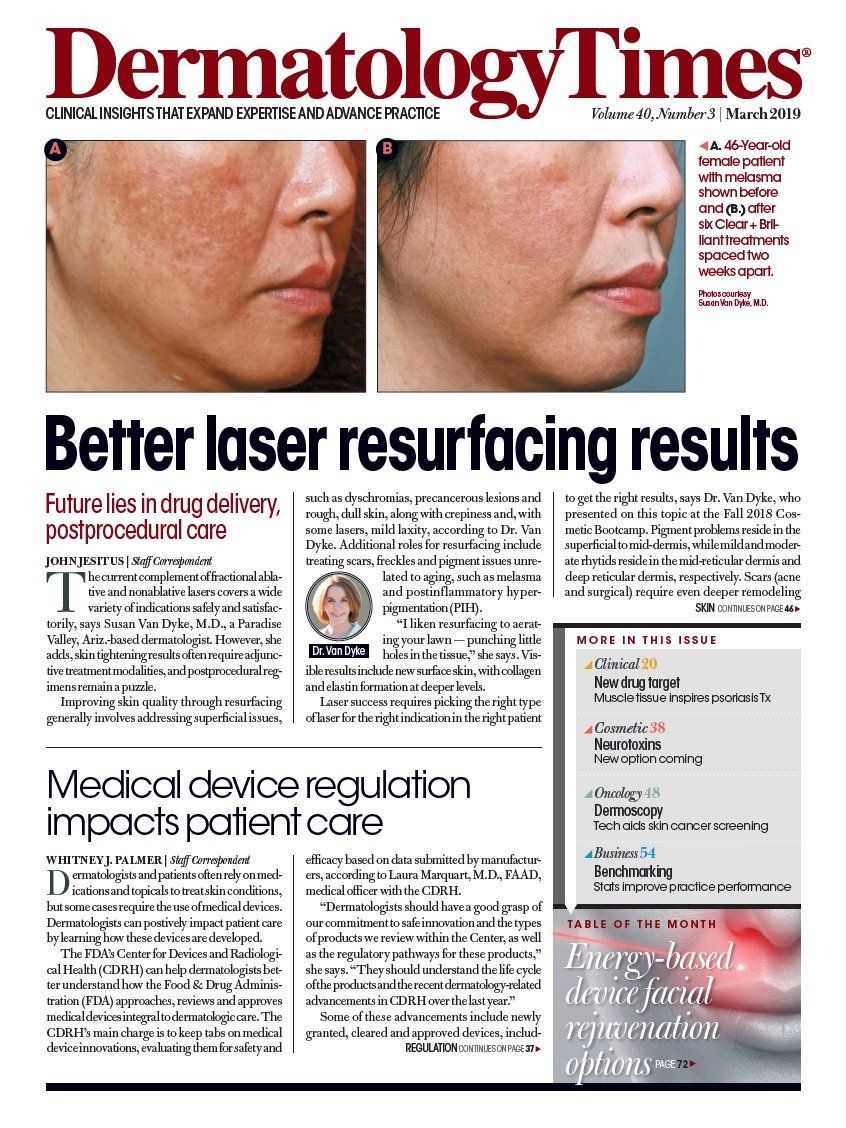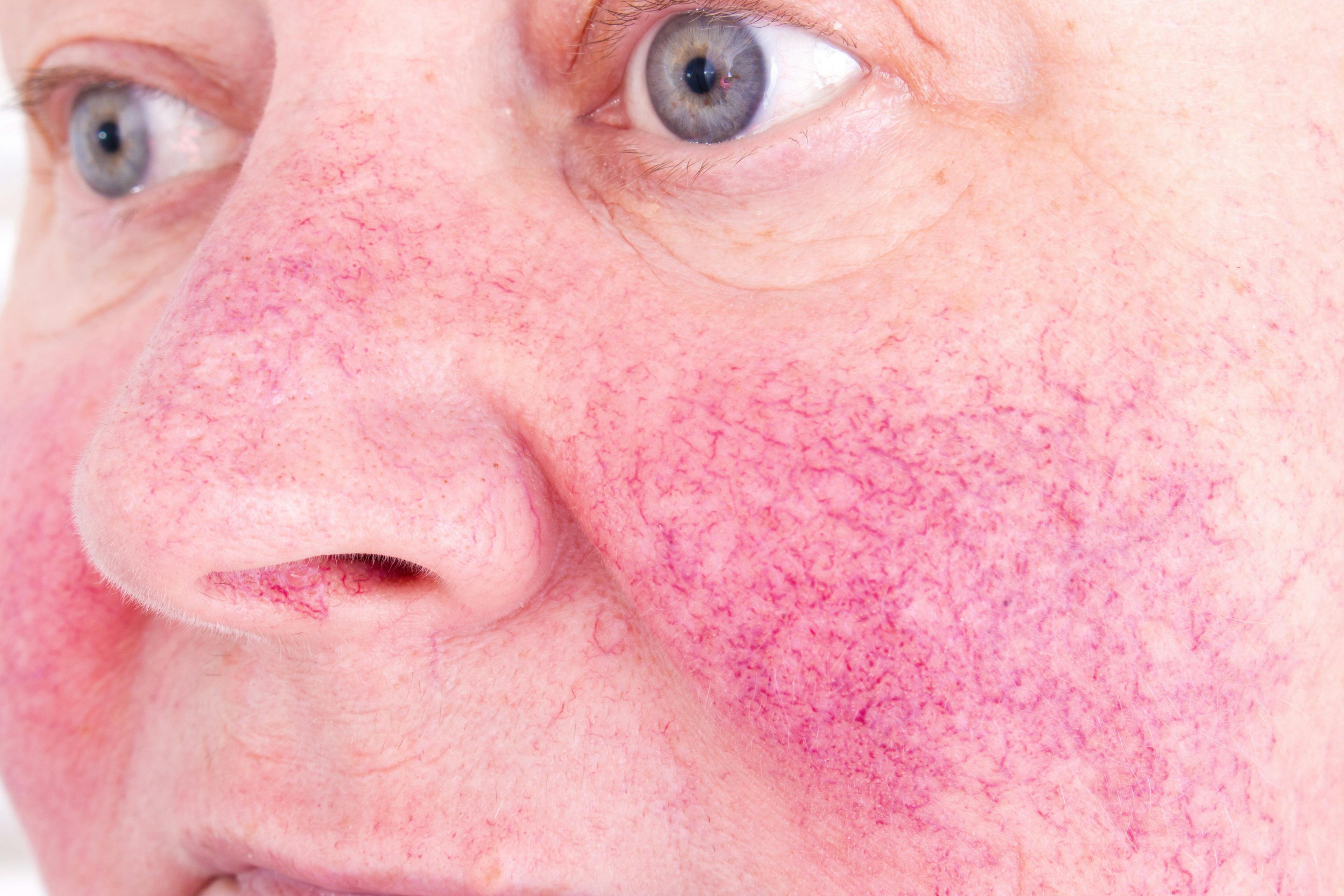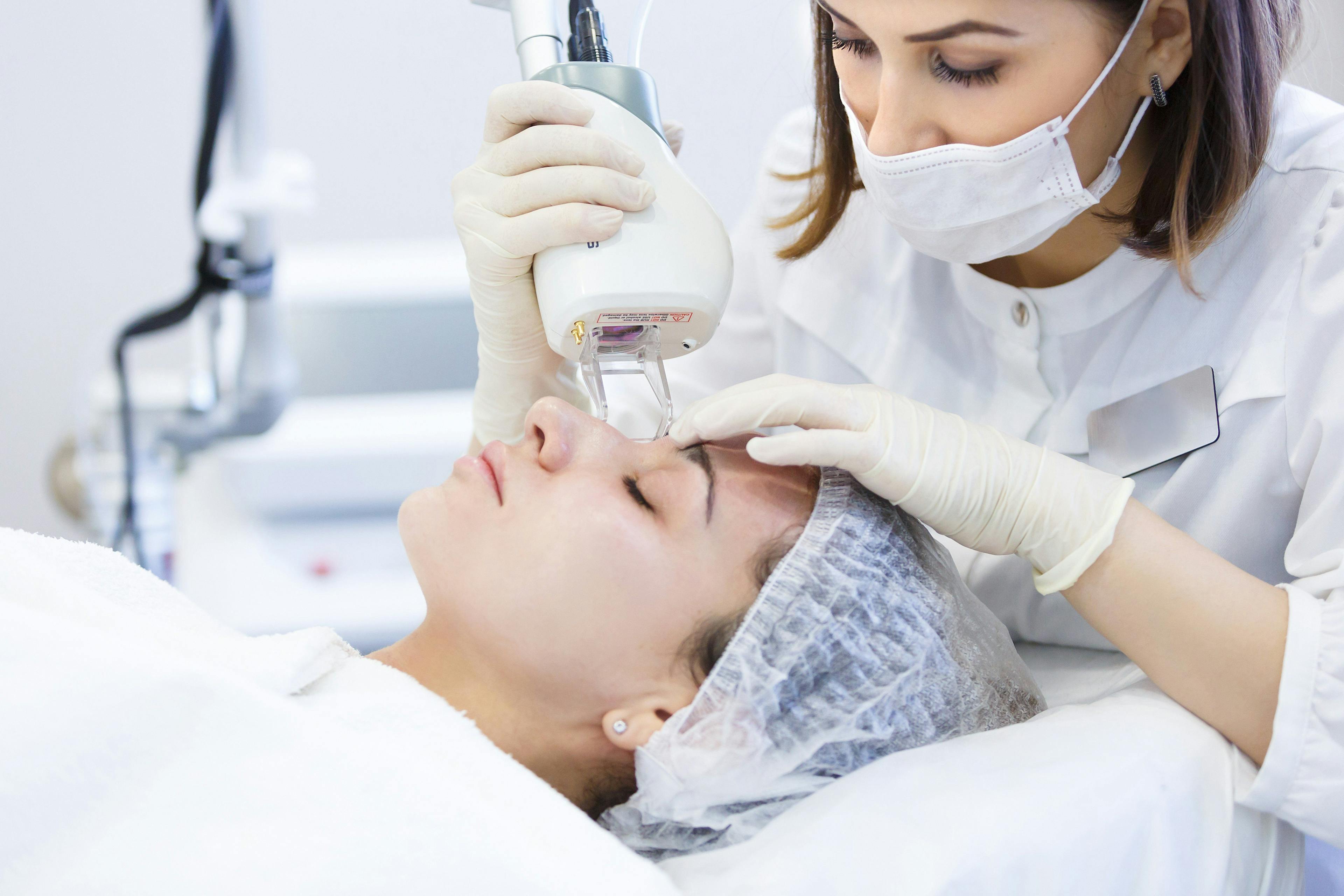- Acne
- Actinic Keratosis
- Aesthetics
- Alopecia
- Atopic Dermatitis
- Buy-and-Bill
- COVID-19
- Case-Based Roundtable
- Chronic Hand Eczema
- Chronic Spontaneous Urticaria
- Drug Watch
- Eczema
- General Dermatology
- Hidradenitis Suppurativa
- Melasma
- NP and PA
- Pediatric Dermatology
- Pigmentary Disorders
- Practice Management
- Precision Medicine and Biologics
- Prurigo Nodularis
- Psoriasis
- Psoriatic Arthritis
- Rare Disease
- Rosacea
- Skin Cancer
- Vitiligo
- Wound Care
Publication
Article
Dermatology Times
A look at the life cycle of drugs in dermatology
Author(s):
To help providers have a greater understanding of the efforts of the FDA to ensure all drugs are of pharmaceutical quality, Michael Kopcha, Ph.D., RPh, director of the FDA’s Office of Pharmaceutical Quality presented on the topic during the American Academy of Dermatology’s Annual Meeting in Washington, D.C.
It's important that dermatologists understand the magnitude of work that goes into supporting the quality of drug products before and after approval. (©FizkesNivens/Shutterstock.com)

In many ways, success in dermatology is measured by the efficacy of the medications used to treat skin conditions. Consequently, dermatologists should feel confident in the drugs and topicals they prescribe their patients.
To help providers have a greater understanding of the efforts of the Food & Drug Administration (FDA) to ensure all drugs are of pharmaceutical quality, Michael Kopcha, Ph.D., RPh, director of the FDA’s Office of Pharmaceutical Quality presented on the topic during the American Academy of Dermatology’s annual meeting in Washington, D.C. During his presentation, he discussed both the drug life cycle and drug quality.
The concept of drug quality is vital to dermatologic treatment, he says, because of the impact it has on patients.
“Quality is what ensures every dose of drug is of the appropriate strength - not too weak and not too strong - and free of contamination and defects,” Kopcha says. “Quality is what gives patients confidence in their next dose of medicine.”
It’s the job of the Office of Pharmaceutical Quality to ensure that all marketed drugs consistently meet quality standards throughout their life cycle in all facilities internationally, he says. This applies to drugs in all products areas - brand names, generics, biologics, biosimilars, and over-the-counter medications.
THE DRUG LIFE CYCLE
Overall, Kopcha says, dermatologists can benefit from a deeper understanding the drug life cycle within the FDA.
“It is important that dermatologists understand the magnitude of work that goes into supporting the quality of drug products before and after approval,” he says.
The drug assessment process ensures manufacturers are capable of meeting established quality standards. To do so, the FDA evaluates data on the drug product, as well as drug manufacturing processes and facilities. In addition, the agency also inspects manufacturing facilities, monitors the state of quality of drugs on the market, and encourages the use of modern manufacturing technologies. It also conducts science-based research that can support quality standards and policy development.
DRUG REGULATION
Alongside the discussion of the drug life cycle, FDA dental officer Natalie Chalmers also outlined an introduction to how the agency regulates approved drugs, as well as drugs under development.
Additionally, she highlighted how the FDA assesses drug safety and efficacy throughout investigations and in actual use, the path of product development from inception to post-marketing safety monitoring, and the potential of decentralized clinical trials where data is collected from subjects without a need to go to clinical trial study sites.
According to an agency spokesperson, this information could have particular applicability to dermatologic indications where skin pathology might be assessed photographically over time to document response to investigational drugs.
The FDA Center for Drug Evaluation and Research (CDER) is responsible for evaluating new drugs before they are approved for sale. Using a drug company’s safety and efficacy data, and before any human clinical trials, a CDER team of physicians, statisticians, chemists, and pharmacologists determines whether the drugs health benefits outweighs the risks.
Potential new drugs must also go through a three-prong approval process. First, the agency analyzes the target condition and currently available treatments as a reference point for the new drug’s risks and benefits. Second, the team assesses the drug’s actual risks and benefits based on data collected from at least two clinical trails. Third, the team also designs risk management strategies, including a drug warning label, to alert providers and patients to the possible negative outcomes associated with the drug.
THE IMPACT
Ultimately, Kopcha says, ensuring drug quality means the medication can consistently meet the expectations of the user - both the patient and the dermatologist. Patients anticipate that any dermatologist-prescribed medication will safely perform as expected with the same efficacy and at the same dose every time.
Regulations that provide for consistent drug quality and performance can also affect how dermatologists view medications, he says. With these protocols and standards in place, providers can have greater trust in products, enabling them to prescribe and recommend legally-marketed brand name, generic, biologic, biosimilar, or over-the-counter drugs with a higher level of confidence.
“Hopefully, dermatologists will come away with a renewed appreciation for the medicine they prescribe or recommend to their patients,” Kopcha says. “They, too, can have more confidence in their patient’s next dose of medicine.”
WHEN QUALITY ISSUES ARISE
While the drug assessment process is designed to create consistent, dependable quality levels, problems can still occur, Kopcha says.
“When manufacturers submit an application to the FDA, we conduct a rigorous quality assessment to ensure the company can consistently produce a safe and effective product,” he says. “However, even when manufacturers are very vigilant, sometimes quality issues arise after drug approval.”
If one such case presents, he says, dermatologists have tools at their disposal to bring attention to the issue. Providers can directly report any suspected quality issues directly to the FDA through the MedWatch system via an online reporting form designed specifically for health professionals. The system also offers dermatologists an opportunity to report and discuss any concerns their patients have about the quality of their medicine.
TAKE-AWAYS
Overall, Kopcha emphasized the importance of a pharmaceutical quality assessment system and issued a request to dermatologists to ensure its continued success.
Pharmaceutical quality is the bedrock of providing patients with safe and effective drugs, and the FDA is the watchdog responsible for regulating the quality of medications in facilities worldwide. Dermatologists can play an integral role in how well the systems works, he says.
“We need dermatologist to join us in committing to the importance of pharmaceutical quality,” Kopcha says. “We need them to discuss potential drug quality issues with patients and report them.”

Newsletter
Like what you’re reading? Subscribe to Dermatology Times for weekly updates on therapies, innovations, and real-world practice tips.




























